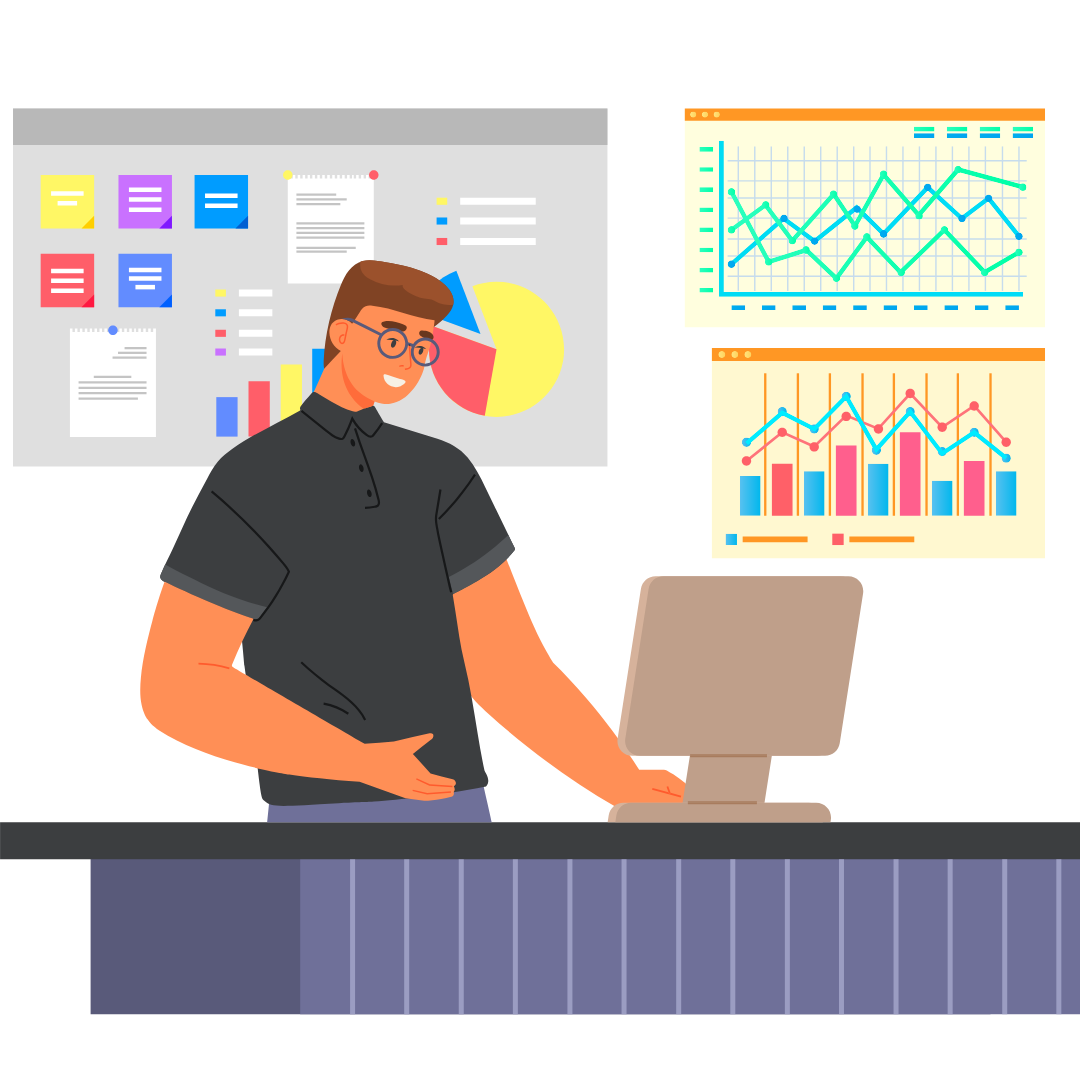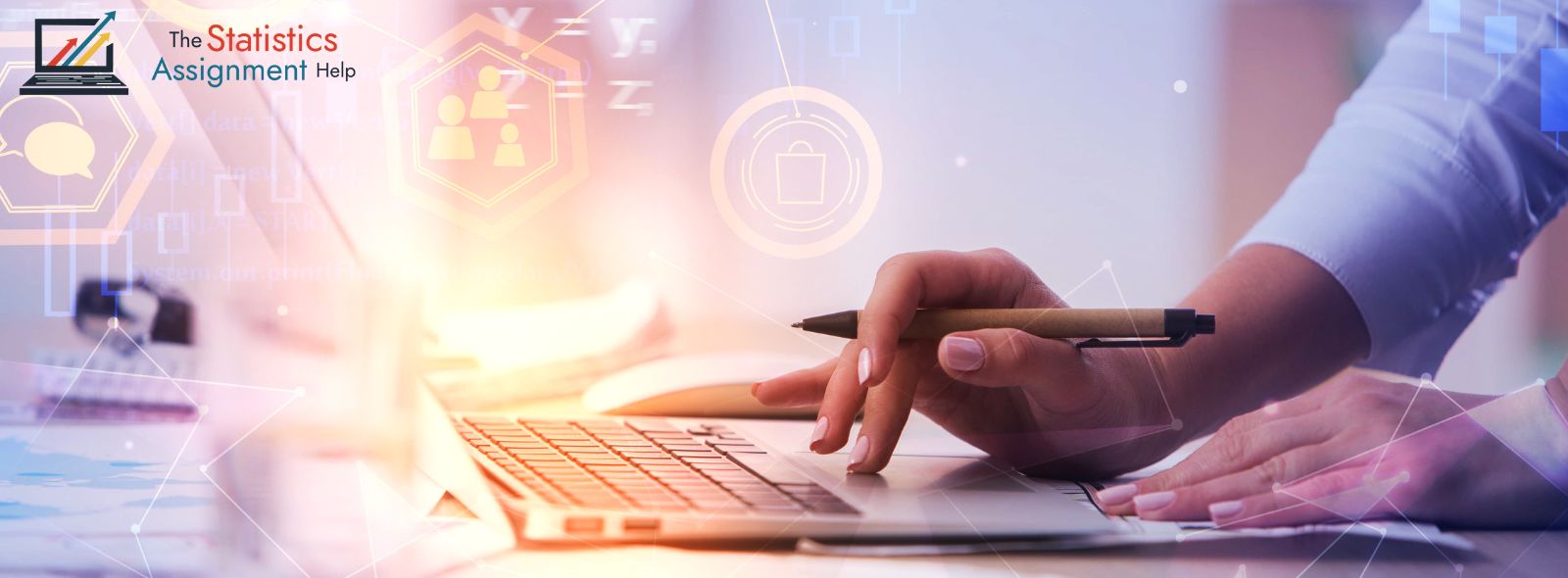Programming Assignment Help: Quality Assistance Guaranteed

Order Now
Why Choose The Statistics Assignment Help?
On Time Delivery
Plagiarism Free Service
24/7 Support
Affordable Pricing
PhD Holder Experts
100% Confidentiality

Looking for Reliable Programming Assignment Help?
Do you find yourself feeling overwhelmed by statistical analyses and lines of code? You're not alone! Statistics assignments often combine statistical concepts with programming languages, creating a unique challenge for students. Don't get stuck in syntax errors or head-scratching algorithms. Our Programming Assignment Help service is here to bridge the gap between statistics theory and practical programming skills.
Our team of programming tutors bridges the gap between statistics and coding. They're professionals in both statistics and programming languages commonly used in this field, including popular languages like Python. We'll guide you step-by-step: understanding statistical concepts, translating them into code, and creating clear data visualizations.
Get your statistics assignments back on track and boost your confidence with our expert Programming Homework Help. Contact us today and unlock your coding potential!
What is Programming?
Statistical analysis can be a complex task for computers. Programming provides a way to bridge this gap. By writing clear instructions (code), you can communicate with the computer and instruct it on how to process and analyze data. This enables the execution of complex statistical tasks, transforming raw data into valuable insights that can inform decision-making.
Here's how programming empowers statistics:
- Efficiency: Performing calculation of complex data by hand is slow and error-prone. Programming automates these tasks, boosting efficiency and accuracy. This frees analysts to focus on insights that drive better decisions.
- Accuracy: Repetitive calculations become flawless with code. Programming reduces the risk of errors that can creep in with manual calculations.
- Data Exploration: Programming allows you to manipulate large datasets, identify patterns, and perform various statistical analyses. It unlocks hidden insights within your data.
- Flexibility: You're not limited to pre-programmed functions in statistical software. With programming, you can customize analyses to fit your specific research questions.
While statistics provides the theoretical foundation, programming translates theory into actionable steps for the computer. By mastering both, you become a powerful data analyst, equipped to extract valuable knowledge from the vast ocean of data.
Why Programming Assignment Can Be Challenging?
While programming offers immense power for statistical analysis, it also presents unique challenges, especially for students, you can tackle this challenges with our Programming Assignment Help:
- Bridging the Gap Between Theory and Code: Translating statistical concepts into code requires breaking them down into logical steps. Statistical concepts like hypothesis testing involve calculations and comparisons that need to be translated into code.
- Choosing the Right Tools: With various programming languages and statistical libraries available (like Python with NumPy and SciPy), selecting the most suitable tools can be overwhelming.
- Syntax Errors and Debugging: Even a single misplaced comma can throw your code into disarray. Learning to identify and fix errors (debugging) takes practice and patience.
- Data Wrangling: Statistical analysis often involves data that's missing information or needs organization. Programming helps with cleaning tasks like filling in missing bits and fixing formatting, but it can be time-consuming and requires some coding skills.
- Efficiency and Readability: As your analysis gets more complex, organized code becomes essential. It simplifies revisions for you and future collaborators, saving everyone time.
What are the Core and Advanced concepts of Programming?
In the world of statistics, programming acts as your powerful partner. To succeed in this field, it's important to understand both the core and advanced concepts that programming offers. Master the important core and advanced concepts with our Programming Assignment Help service.
Core Concepts:
- Data Structures & Manipulation: Statistical analysis depends on well-organized data. You'll learn to store information efficiently using tools like lists and dictionaries, and then filter and sort to focus on what matters most for your analysis.
- Control Flow & Functions: Programs can act smarter by using data to make choices ("if" statements) and by breaking big tasks into smaller, reusable ones, saving you time and effort.
- Libraries for Statistics: Popular languages like Python offer libraries like NumPy and SciPy, specifically designed for statistical computations. Learning these libraries will significantly enhance your analysis capabilities.
Advanced Concepts:
- Object-Oriented Programming (OOP): Object-oriented programming (OOP) enables code reusability by creating individual units of data and instructions (objects). This simplifies the management and modification of complex projects.
- Data Visualization Libraries: Data visualization tools like Matplotlib (Python) and ggplot2 (R) go beyond static charts. They allow viewers to interact with the data directly.
- Machine Learning Integration: Programming unlocks machine learning, a powerful tool that finds hidden patterns in your data. This lets you make data-driven predictions and informed decisions.
What are the key Programming Languages used for Statistics?
The world of statistics offers a diverse range of programming languages, each with its strengths for different tasks. Our Programming Assignment Help experts will guide you to master Programming languages. Here are some key languages you might encounter in your statistics studies:
- Python: Python's clear and easy-to-read code makes it a favorite for beginners in statistics. It also boasts a wealth of libraries specifically designed for statistical tasks. These libraries include NumPy for efficient numerical computations, SciPy for advanced statistical analysis, and Pandas for organizing and manipulating data.
- R: R excels in statistical research, offering a vast collection of specialized packages and renowned graphics capabilities (ggplot2 for clear visualizations). It also has a strong focus on statistical modeling (linear regression, time series analysis, etc.).
- JavaScript: Web development tools like D3.js use JavaScript to create interactive charts and graphs on web pages. Viewers can explore the data directly, making complex findings easier to understand.
- SQL: Structured Query Language (SQL) is a fully prescribed language for mass communication with the database. SQL queries are indeed statements or instructions that are tailored for the purpose of pulling data from a database application.
- STATA: STATA is a structured data analysis program that is ideal for both novice and professional analysis. This makes it a flexible statistical software with a range of tools for different analysis tasks.
- SAS: SAS contains a complete array of statistical and business analysis tools that have been developed for use by companies and governmental organizations to help manage their data assets more effectively.
- Julia: Julia is a rising star in statistics, balancing readability with speed. Its syntax is similar to Python, making it easy to learn. However, Julia is a compiled language, resulting in faster execution times, especially for large datasets. Statistical libraries are growing rapidly in Julia.
What are the Important Applications of Programming?
The applications of programming in statistics are vast and transformative. Here are some key areas where programming shines:
- Automating Complex Calculations: Analyzing large data sets by hand is slow and error-prone. Programming automates calculations, freeing you up for the key parts: interpreting results and uncovering insights.
- Data Visualization: Data analysis is about finding patterns and sharing insights. Programming turns numbers into visual stories, making complex information easier to grasp and decisions better informed.
- Advanced Statistical Techniques: Programming opens up capabilities that are hard to comprehend. Machine learning uncovers overlooked patterns, time series analysis predicts trends, and bootstrapping enhances your analysis.
- Data Wrangling and Cleaning: Information that is retrieved from the real world is often crude, containing errors, and missing values and is often in an inconvenient format. Programming helps clean and organize it for analysis. You can use it to fix errors, fill in gaps, and reshape the data.
- Statistical Modeling and Simulations: Programming allows you to build and customize statistical models to explore relationships within your data. You can run simulations to test different scenarios and gain deeper insights.
How to Conquer Programming with our Expert Programming Assignment Help?
Feeling overwhelmed by statistics and coding? No problem! The Statistics Assignment Help will guide you step-by-step, making complex concepts clear and helping you develop the skills to excel as a data analyst.
Here's why you should choose us:
- Expert Tutors in Statistics & Programming: Our Programming Assignment Help team combines statistical knowledge with coding skills in languages like Python. This expertise tackles complex data challenges and turns your data into insights.
- Debugging and Optimization: Don't let coding errors slow you down. Our Programming Assignment Help tutors will provide guidance to assist you in rectifying the errors and demonstrate methods to optimize the performance of your code.
- Bridging the Conceptual Gap: We'll make complex statistics practical. Learn by doing, translating theory into code step-by-step. Gain the skills to use your statistical knowledge to solve real-world problems.
- Confidence and Skills Building: Our Programming Assignment Help service go beyond assignments. Our goal is to make you a confident, independent data analyst with the skills to solve new challenges.
- Tailored Programming Guidance: Choosing the right statistical programming tool can feel overwhelming. Our Programming Assignment Help experts will assist you in finding the perfect fit for your analysis, ensuring a smooth process and insightful results.
Get back on track and boost your confidence with our Do My Programming Assignment service. Contact us today and unlock your potential in statistics and programming!